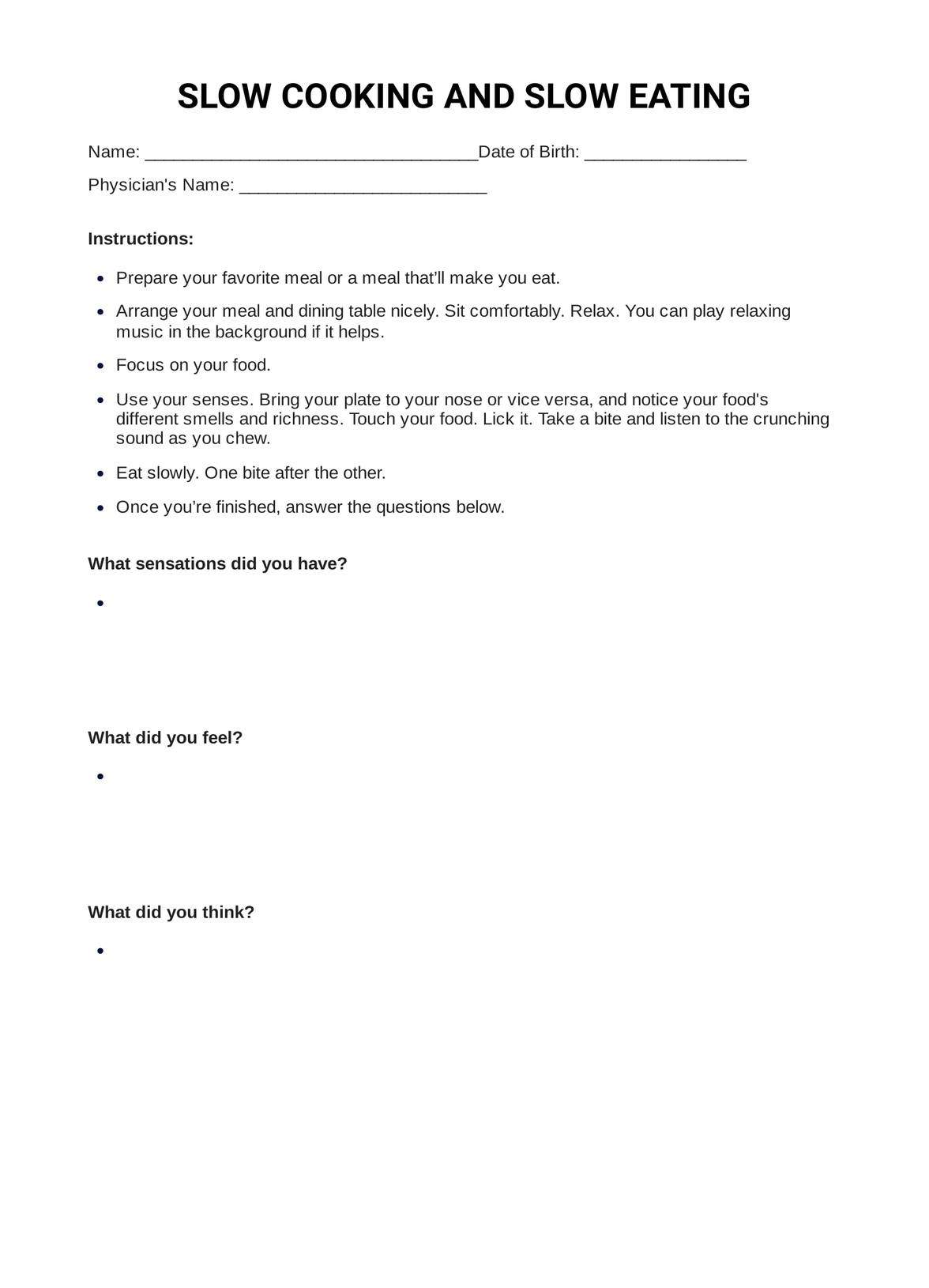Usually, it can take at least 20 minutes for the client to reflect and answer the “Slow Cooking and Slow Eating PTSD Exercise and Worksheet.” Do note that the duration mentioned excludes the time it took to prepare the food and eat.

Slow Cooking and Slow Eating PTSD Exercise and Worksheets
Help your patient have a healthier relationship with food by teaching them the Slow Cooking and Slow Eating PTSD Exercise using the corresponding worksheet.
Slow Cooking and Slow Eating PTSD Exercise and Worksheets Template
Commonly asked questions
The “Slow Cooking and Slow Eating PTSD Exercise and Worksheet” can help clients manage and cope with their eating-related symptoms until they build a healthy relationship with their food. On the other hand, it can help the referring physician know more about the patient through their thoughts and experiences, which is a factor to consider when formulating/changing the client’s treatment plan.
Referring physicians can give the “Slow Cooking and Slow Eating PTSD Exercise and Worksheet” to patients who exhibit/experience eating-related symptoms, are diagnosed with an eating disorder, or want to learn how to have a healthier relationship with food.
EHR and practice management software
Get started for free
*No credit card required
Free
$0/usd
Unlimited clients
Telehealth
1GB of storage
Client portal text
Automated billing and online payments











